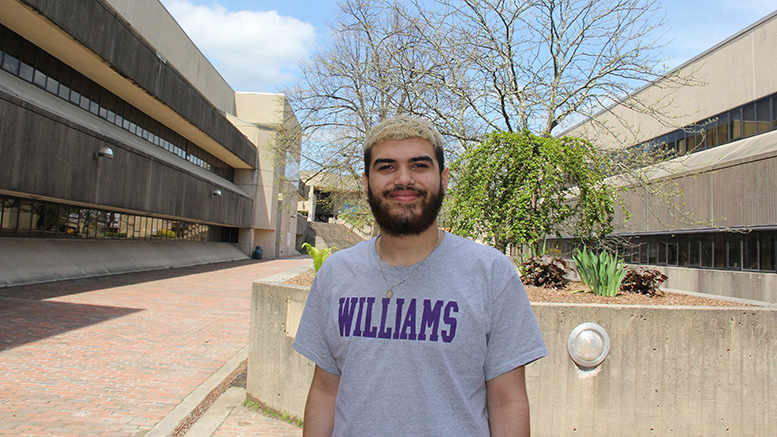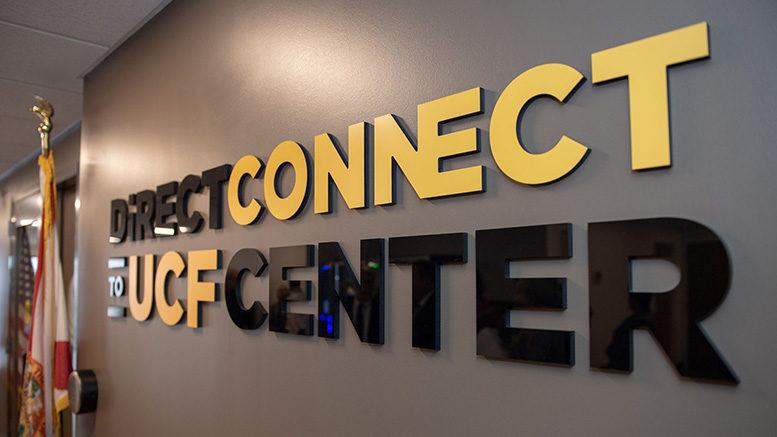Four-year institutions of higher education facing enrollment declines are stepping up their outreach to recruit more transfer students from community colleges. That’s the case even for competitive colleges and universities.
“The pandemic is exacerbating the competitive landscape,” says John Fink, a senior research associate with the Community College Research Center (CCRC) at Columbia University in New York. “Because enrollments are down everywhere, tuition-driven four-year institutions are staring down the barrel and need to bring in more students.”
CCRC’s Tracking Transfer report found just 17% of upward transfers from community colleges go to a selective institution, based on federal IPEDS data. But that might be changing.
Filling enrollment gaps
The competition for students among colleges, especially the tuition-driven, higher-priced smaller institutions, is encouraging poaching behavior, Fink says. They are reaching out to community college students and urging them to transfer before they graduate.
According to Fink, about 80% of students nationally enroll in community college with the ultimate goal of earning a bachelor’s degree. But only about 30% actually transfer to a four-year institution. And among those who do transfer, only about 34% complete an associate degree.
“That’s important because students who do get an associate degree do better after they transfer,” Fink says.
Transfers are having a moment nationally, agrees Janet Marling, executive director of the National Institute for the Study of Transfer Students, which is based at the University of North Georgia.
“Four-year institutions are viewing community college transfers as a viable option for filling their enrollment gaps,” Marling says. Universities are looking toward transfer students to make up for the decline in high school students taking a pause due to the pandemic.
In addition, Marling says, “the higher education landscape is embracing transfer students as a source of talent and diversity.”
“Students who had planned to transfer appear to be continuing with those plans,” says Marling, However, “students not engaged in higher education before the pandemic have not returned.”
Cost will be a big issue, Marling says.
“If the transfer institutions are able to offer financial aid packages, then potentially there would not be a disruption in transfer pathways. But that’s a big if,” she says.
Elite colleges reach out
Members of the Phi Theta Kappa Honor Society (PTK) for community college students are more engaged than even in learning about transfer options to selective institutions, says Executive Director Lynn Tincher-Ladner. However, it’s too early to know whether they are actually applying in greater numbers.
About 3,000 students – more than a 100% increase – are currently taking PTK’s online Transfer Edge course, which has an entire unit on how to apply to an elite college, Tincher-Ladner says.
Since March, about 5,000 students have participated in virtual Zoom sessions with recruiters from four-year institutions, she says. Those sessions have replaced college fairs and in-person visits during the pandemic.
Tincher-Ladner also notes that four-year institutions, including several in the elite category, have become more interested in joining PTK Connect as part of their outreach efforts to recruit promising transfer candidates.
“Columbia has really upped their game with us,” she says, and “Yale and Penn State are also not waiting for students to contact them.”
About 25,000 students are currently using PTK Connect, a big increase, to search for scholarship opportunities, Tincher-Ladner says. And there’s been a “tremendous uptake” in PTK’s online sessions on how to apply for scholarships from the Jack Kent Cooke Foundation (JKCF).
The deadline for JKCF scholarships doesn’t close until January, but submissions are already “trending up almost 50%,” says JKCF Executive Director Giuseppe Basili.
Community college students awarded a scholarship receive up to $40,000 a year to cover the cost of attending a selective four-year institution. Jack Kent Cooke Scholars have been admitted to Yale, Princeton, University of California, Berkeley, UCLA, University of Texas, and other prestigious private colleges and flagship state schools.
The surge in interest in JKCF scholarships “seems a little counterintuitive, as community college enrollment had been declining over the past five years,” Basili says.
He speculates that due to the pandemic, more students want to stay closer to home and took a year off after earning an associate degree – and now want to resume their education.
Enrollment trends at four-year institutions are also a factor, he says. International enrollments are down a lot, so he expects “competitive or selective colleges are turning to community colleges as an important way to fill their classrooms.”
“Selective colleges will look to opportunities with community colleges in new ways. We are eager to work with them to promote that,” he says.
One area that’s increasingly important, Basili says, is the need for community colleges to provide more support to students.
“If you’re not on campus, who’s helping you make transfer decisions? Faculty are going to be essential in this, over Zoom or another virtual tool. If faculty can take the mantle on transfer, that can make a big difference,” he says.
Preparing students for transfer
At Dallas College in Texas, where enrollment is down about 9% from last year and the transfer rate has also declined, “we’re making sure the four-years are aware of our programs,” says Provost Shawnda Floyd. Dallas College is also “being more aggressive on the front end,” making sure students know success coaches can help them seamlessly transfer their credits.
One of the top destinations of Dallas transfer students is Southern Methodist University. For students at Central New Mexico Community College (CNM), it’s the University of New Mexico. About 2,000 to 3,000 students transfer to the university each year. But that has declined this year, reports CNM President Tracy Hartzler.
Hartzler says there may be several reasons for the decline: Many students are struggling economically as the result of the pandemic and are taking a year off. In the case of adult students, many have to stay home to help their children learn remotely.
To encourage more students to transfer, CNM is implementing active advising and working with four-year students to align pathways, she says. Transfer agreements with regional four-year institutions encourage students to complete an associate degree by accepting all their credits if they earn a degree.
Strong relationships
For Holyoke Community College (HCC) in Massachusetts, “transfer is part of our DNA,” says Irma Medina, senior special programs coordinator for the pathways program.
HCC is near the institutions that are part of the Five College Consortium: Smith College, Mount Holyoke College, Amherst College, Hampshire College and the University of Massachusetts, Amherst (UMass). HCC has great academic partnerships with them, as well as Williams College and Westfield State University, Medina says.
About 30% of HCC students transfer, with UMass and Westfield the top destinations.
“They feel our students are well prepared academically,” Medina says.

Many low-income, first-generation students have also secured full funding to attend prestigious institutions.
“Our relationship has grown out of mutual respect and trust for each other in the work that we do, as well as caring for the students in this oftentimes emotional process,” Medina says. “The partnerships include inter-institutional courses and discussions about the transfer of credits.”
While four-year institutions have always reached out to HCC, that has picked up during the pandemic, says Mike Broadbent, coordinator of transfer affairs and articulation.
The calendar is packed with two or three virtual visits every day, he says. “We’re hearing from schools all over the country now,” he adds.
Smith and Amherst are now accepting credits for online courses they wouldn’t have previously considered, Medina notes. At the end of the spring semester, HCC gave students grades of satisfactory or unsatisfactory instead of letter grades, and some four-years are accepting those credits, too.
Soaring interest in transferring
Valencia College, which has a strong partnership with the University of Central Florida (UCF) called DirectConnect, has seen a 16% increase in transfers during 2019-20 from the previous year. That amounts to 4,000 transfer students.
Valencia won’t know the full transfer picture for this year until the end of the term, says Isis Artze-Vega, vice president of academic affairs, but “we’re seeing lots of promising data.”
While Valencia experienced a drop in first-time enrollments this year like many other community colleges, there hasn’t been a decline in returning students. Students took more credits this summer. And there has been record participation in information sessions about transferring to UCF.
All those factors are early indicators “that we’ll have a really robust pool of students ready to transfer,” Artze-Vega says.
Under DirectConnect, students who complete an associate degree are guaranteed admission to UCF. Degree completion is a prerequisite for transferring. Faculty from both colleges collaborate on curriculum alignment.
The university hosts offices, classes and success coaches on the Valencia campus. That’s a “visible indicator of a relationship between the two colleges. Students trust that,” Artze-Vega says.
Create pathways to transfer
To encourage more students to transfer, Artze-Vega urges community college officials to help students develop pathway maps, offer university tours focusing on the majors they plan to pursue, and “let them know we believe in them.”
Marling encourages community colleges to talk to students about transfer opportunities earlier and “create a culture of transfer.”
All students need help with the transfer process regardless whether they plan to attend an open access or selective institution, adds Medina of HCC. She urges community colleges to prepare students by ensuring they take writing and research courses.
Medina calls for four-year institutions to help transfer students adjust by holding orientation sessions just for them.
“The isolation is real,” she says. Many students who transfer to a selective institution have “imposter syndrome,” as they feel like they don’t deserve to be there.
“There’s still a misperception about the academic ability of transfer students,” notes Fink of CCRC. “Actually, community college students do just as well, if not better, than their university peers. They’re coming with a wealth of experience and knowledge. They have a lot to offer.”
To increase the transfer rate, Fink suggests community colleges “redesign around helping students get to the end goal as soon as possible when they enter.” That includes implementing guided pathways, encouraging students to decide on a career path early, and working with four-year institutions to align courses and ensure credits are counted.
Currently, the associate degree for transfer “is more of a placeholder than a program,” he says. “Too often, students choose 20 random courses and that’s an associate degree.” Instead, he recommends tying an associate degree for transfer to a specific bachelor’s degree program area, such as business or science.
Fink also advises community college leaders to take a deeper look at data. Go beyond identifying the top transfer destinations and look at how many students transfer without earning an associate degree and how many earn a bachelor’s degree and in what field, he says. “All that information is useful in devising a strategy for building more intentional transfer partnerships.”
That data can also be used to show four-year institutions that they can boost the number of students of color and students from lower-income backgrounds, he says. “A community college that sends an institution 400 students every year has some bargaining power.”

